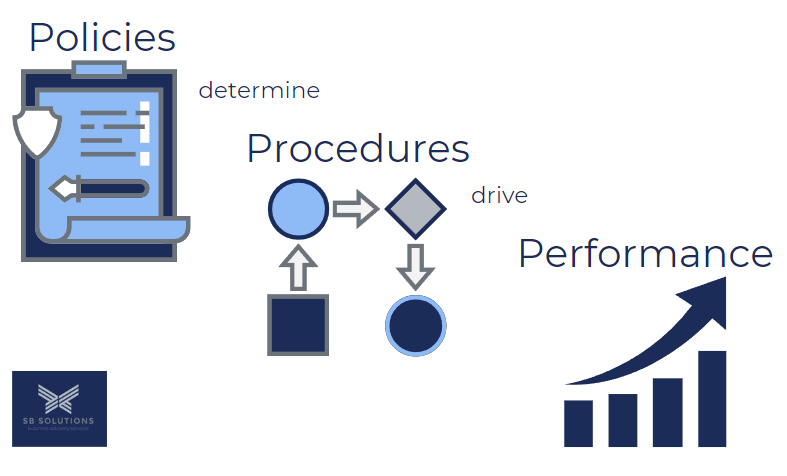Do your procedures support your policy and drive performance?
You’ve heard about policies, and most probably had to sign acknowledgement of quite a few during your employment history, such as IT and harassment policies. Many people don’t really read policies properly, as they are often long-winded and full of jargon. As such, it most likely comes as no surprise when I tell you that policies have an almost universally bad reputation. So, why is it that most organisations still have multiple policies in place?

What is policy and why is it important to a business?
In a business environment, policies are principles of action or – in plain language – a plan of what is expected to happen or how to act in specific circumstances. Policies establish guidelines for how business strategies and objectives will be achieved. They are the link between an organisation’s values and its daily operations.
Policies are important, as they clarify what is expected of employees and guide individuals’ actions when they need to make a decision. It helps everyone in the organisation know what is acceptable and what is unacceptable behaviour, and how instances of unacceptability will be dealt with. It also ensures that there is a consistent approach across the organisation. As such, policies are an important tool for establishing organisational culture.
Policies have gotten a bad reputation in recent years, thanks to being poorly worded and very, very long. Good policies do have their benefits, such as:
- Increasing compliance with regulatory requirements or with best practice
- Reducing the risk of incidents and disasters
- Letting employees know where to turn in the event of a crisis or grievance
- Driving standardisation and improving processes
What are procedures and why are they important?
A procedure is a step-by-step guide to performing a specific set of tasks in order to achieve a specified goal. They should clearly show job responsibilities, which tools and support is required, and what controls need to be in place. Good procedures ensure that organisational resources are used efficiently.
From the definition above, it should be clear that policies drive the procedures. This means, a policy will state what is expected of employees, while the procedure will clearly dictate what actions to take. For example, policy will state what an employee may and may not use a computer for, but a procedure will state the exact steps to creating an invoice. This then drives performance, as there can be no income without the creation and issuing of invoices.
This relationship is illustrated below:


While governance cascades down from policy to procedures to performance, it does mean that if you want to improve performance, the procedures need to change. Changes to procedures may mean reviewing your policies. So the policies must be written in a way that allows for continuous changes and improvements.

This should not be the only time policies are reviewed. Would it surprise you to find out that you should have a procedure in place that addresses how often to review each policy, and who should do so?
The review procedures need to take into account the following:
- Ensuring buy-in to the changes
- Consulting those most affected by the changes first
- Allowing for feedback to the proposed changes, before implementing them
- The presence of appropriate training for the changes, if required
Finally, it is important to keep a record of what changes were made, why these changes needed to be made, and what the results were.
